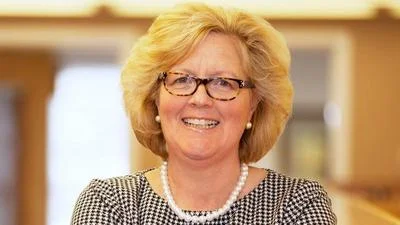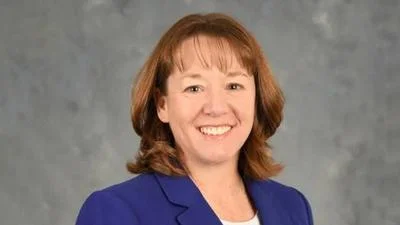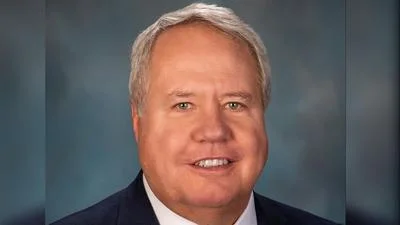Those who blame the state's higher education funding shortfalls on Springfield gridlock should focus on the real causes of the crisis: skyrocketing pensions, bloated administrative costs, and soaring tuition and fees for students, according to the co-author of a recent study.
"This is a national problem," Ted Dabrowski, Illinois Policy Institute’s vice president of policy, said. "Illinois is at the top of the problem, and we're also having a budget crisis. The budget crisis isn't causing the problem, it's only exposing the cracks of what’s already there."
Dabrowski helped author "Pensions vs. Higher Education," along with Illinois Policy Institute analyst John Klingner, a report released earlier this month.
"The truth is that more than 50 percent of Illinois’ $4.1 billion budget for state universities is spent on retirement costs – making it easy to understand why there’s not money out there for much else," the report says.
Among other things, the report chronicles the doubling of tuition rates over the past decade, which it asserts has made a college education too expensive for many low- and middle-income students.
The study shows an imbalance of state spending devoted to retirement costs versus operations. In 2006, the amount allocated to retirement costs was 17 percent; operations, 83 percent. In 2015, the amount allocated to retirement costs was 53 percent; operations, 47 percent.
It also shows the generous compensation for the top chief executives at state universities and community colleges.
Dale Chapman, president of Lewis and Clark Community College, based in Godfrey, earned even more than the College of DuPage chief executive ($495,092) with a whopping $540,403 total compensation package in fiscal year 2014.
Southern Illinois University Edwardsville chancellor Julie Furst-Bowe, who took another post in Wisconsin last year, earned $307,000 in total compensation in fiscal year 2014.
The study further shows how annual pension benefits of average State University Retirement System workers double over the course of their retirements.
Meanwhile, the report says, low-income students have not received tuition grants because funding has been suspended due to a lack of a budget, which, as as result, has prevented many from enrolling in classes.
The report comes as Illinois enters its eighth month without a budget. The state began operating without a budget July 1 when Republican Gov. Bruce Rauner vetoed an out-of-balance spending package sent to him by the Democrat-controlled General Assembly.
One major obstacle to approving a budget has been pension costs, which are part of the real cause of the higher education crisis in Illinois, Dabrowski said.
Citing its analysis of state data and education spending reports, Dabrowski's and Klingner's report found that more than half of state universities’ budgets are spent on pension costs for school faculty and administrators.
"That money isn't being spent to teach our students," Dabrowski said. "That money isn't making it into the classroom."
Pensions are only part of the issue, Dabrowski said. He pointed to skyrocketing increases in administrative pay and overhead.
The report says that rather than keeping tuition low for students, state colleges and universities have taken "the flood of federal and state monies available to higher education over the past two decades and spent it on a massive increase in administrative positions and exorbitant executive compensation."
"That growth and those higher salaries have dramatically increased the cost of university pensions, causing the state to redirect a majority of its higher-education funds toward retirement costs," the report states.
According to the report, more than half of the state's 2,465 university administrators received a base salary of $100,000 or more in 2015, in addition to housing allowances, cars, club memberships and bonuses many top administrators receive.
There also are more administrators to pay. The number of administrators in the state's universities grew by almost a third, 31.1 percent, between 2004 and 2010 while faculty only increased by 1.8 percent and the number of students grew 2.3 percent, according to the report. Meanwhile, in the state's community colleges, the number of administrators grew 13.5 percent, faculty by 6.8 percent and students 3.9 percent over the same period, the report says.
"Rather than making education affordable and accessible, colleges and universities have turned into job opportunities for high-paid administrators and executives," Dabrowski said.
Skyrocketing costs have forced the difficult choice many students have to make between crippling student loan debt or no higher education at all, Dabrowski said.
He said that more than 1.7 million Illinois residents hold student-loan debt, a total that approaches $50 billion and the state the fourth-highest in the country.
"It used to be you could work part time and go to college," Dabrowski said. "That isn't possible anymore, tuition is just too high."
Dabrowski added he has first-hand experience with the higher education crisis in Illinois because he has a daughter in college.
"Families and students know there is a higher education crisis," he said. "The problem is they want to blame the state and the budget impasse. What they really need to focus on is the real causes, and colleges and universities need to make higher education affordable and accessible again."
To do that, the state's colleges and universities need to take a variety of steps, including freezing tuition and rolling back on administrative pay and overhead, he said.
"If college and university leaders really care about making higher education affordable and accessible for the students they're supposed to serve, then they'll really focus on those high salaries," Dabrowski said. "They'll focus on the increase in administrative staff and all those other increases that have led to half of spending going to pension costs."






 Alerts Sign-up
Alerts Sign-up